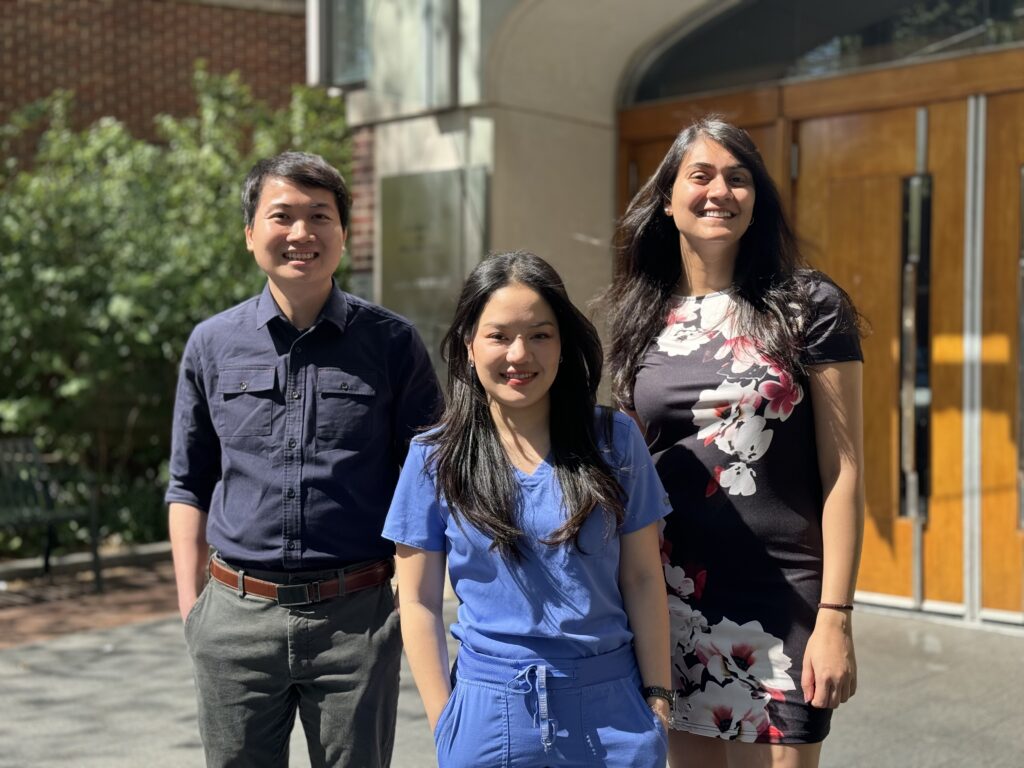
The Center for Innovation and Precision Dentistry (CiPD), a collaboration between Penn Engineering and Penn Dental Medicine, has partnered with Wharton’s Mack Institute for Innovation Management on a research project which brings robotics to healthcare. More specifically, this project will explore potential uses of nanorobot technology for oral health care. The interdisciplinary partnership brings together three students from different Penn programs to study the commercialization of a new technology that detects and removes harmful dental plaque.
“Our main goal is to bring together dental medicine and engineering for out-of-the-box solutions to address unresolved problems we face in oral health care,” says Hyun (Michel) Koo, Co-Founding Director of CiPD and Professor of Orthodontics. “We are focused on affordable solutions and truly disruptive technologies, which at the same time are feasible and translatable.”
“This initiative stems from our ambition to disseminate Wharton’s knowledge and expertise in innovation management among Penn’s inventors,” says Valery Yakubovich, Executive Director of the Mack Institute. “By pairing MBAs with clinical researchers and engineers, we aim to accelerate the process of bringing transformative health tech to the market and open up new career opportunities to Wharton students.”
The inaugural team is comprised of Chrissie Jaruchotiratanasakul, a Doctor of Science in Dentistry candidate completing a residency in endodontics; Hong-Huy Tran, a Penn Engineering postdoctoral fellow studying robotics and materials science; and Manali Mahajan, a Wharton MBA student with career experience in strategy and operations. Their task is to develop a commercialization strategy for a micro-robotics technology currently being developed in the labs of Koo and Edward Steager, a Senior Research Investigator in Penn Engineering’s General Robotics, Automation, Sensing and Perception (GRASP) Lab.
The technology to be explored in this project is a groundbreaking device that can treat, prevent and even detect harmful bacteria. The researchers use tiny iron oxide nanoparticles, controlled by a magnetic field, to provide a complete dental cleaning. The process replaces brushing, flossing and mouthwash in one easy, automated step that requires no manual effort on the part of the user.
Koo says this technology could be crucial in clinical settings like hospitals and care homes, where research increasingly shows that oral hygiene is associated with overall health and general wellbeing, as well as reduced patient complications like pneumonia. Researchers also speculate that the device could have at-home care market potential, suggesting it could help address low rates of compliance in brushing and flossing.
“Oral care innovation has been stagnant,” explains Steager. “Over the last 5,000 years, we’ve gone from a ‘paintbrush’ for your teeth to an electric brush for your teeth. There’s not a lot of innovation when it comes to the mechanical aspect of oral care.”
However, Koo says that, ultimately, he is most concerned about getting the technology to those with unmet oral care needs, like seniors and people with disabilities, and that reaching those populations is what motivates him to undertake this study.
“There is a big gap to be filled and we have a lot of great ideas,” he says. “Many people could really benefit from this technology and it’s time we bring it to market. That’s why I’m excited about this collaboration.”
To learn more about this interdisciplinary research, please visit CiPD.
This press release has been adapted from the original published by the Mack Institute for Innovation Management.
